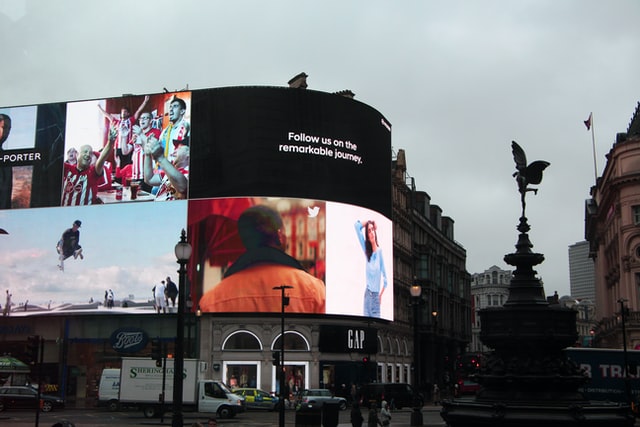What is PPC Advertising and How Do I Use It?

Pay-per-click (PPC) advertising is all about generating leads and increasing sales. It’s also dependent on relevance in order to build brand awareness. Think back to a time when you were searching on Google for a product or service. Maybe you wanted to know where you could get a good web host, so you typed the phrase “web hosts near me” into the search bar. You received several million websites, including a few that were marked as ads. If you were to click on any of those links, you would be playing right into the goal of Google Ads, which is the most popular PPC advertising system in the world. Let’s dive into what this model can help your business achieve.
PPC Models
PPC advertising is beneficial for advertisers and publishers—for instance, Google—alike. Advertisers are able to target their specific audience, while publishers are provided with a stream of revenue. Here are two ways that this model is implemented.
Flat-Rate
A publisher is paid a fixed fee per click on an ad by an advertiser. Most publishers have rates that relate to different areas of their network. This segmentation is due to some types of content being more attractive than others. Therefore, unless negotiated upon through a high-value contract, they can drive up the cost per click.
Bid-Based
Advertisers have a maximum amount of money to real-time bid on a spot. They compete amongst themselves in an automated auction under the publisher. The auction begins again every time a visitor triggers the spot by searching for the specific keyword it falls under. However, considering the publisher also takes into account the quality of content, it isn’t just about the money.
How Google Targets Ads
As the largest PPC advertising platform out there, Google is very particular about what it puts at the top of the results pages. It recognizes that you need the right audience to make your ad count. Because of this, Google Ads is interested in your location. The system determines physical location based on both your IP address and location data from your device. This data may be pulled from your connection to Wi-Fi, GPS, Bluetooth, or the nearest cell tower. In regard to the location of interest, Google is concerned with the geographic terms used in past searches, as well as the content on the websites where an ad is displayed. While it can be eerie to think about how much Google knows about us, it really does help to find what we are looking for.

Photo by J. Kelly Brito on Unsplash
PPC Keyword Research
In the same way that keywords are the heart of SEO, they are vital to PPC advertising. They are used by marketers and advertisers to match their content with questions that people are asking. These are three keyword match types that you should consider going for.
Exact
These are restrictive keywords. They need a specific phrase to be searched in order to tie back to your business. With an exact match, you are able to reduce your unwanted costs for ad spend because, if people are looking up that phrase, they are most likely interested in what you are offering. That being said, Google’s algorithm now recognizes plurals and synonyms so that it isn’t so confining.
Phrase
You have more versatility with phrase matching. While the keyword still needs to be in the right order in the query, it can have other words surrounding it. For example, instead of the exact match of “web designer,” you could say “web designer in Austin.” Since the algorithm update that pushed modified broad matching into phrase matching, it is actually now able to cover additional traffic.
Broad
The widest audience is reached through the default option of broad matching. No matter the order of the words searched, or whether they are simply synonymous, your ad can be matched. The problem is that you could end up paying for irrelevant traffic. So, although you may get lots of clicks, you won’t be converting as efficiently as you would be with exact or phrase matching.
Product Listing Ads
E-commerce campaigns benefit from PPC advertising because Google places your products directly in front of millions of shoppers. Product listing ads (PLAs) are the images that come up when you search for a product. The luxury of PLAs is that they provide a convenient user experience. When you type in “red shoes,” a carousel section appears with the top ads. They include the particular name of the shoe, the real-time price, and where to find it. You can also see reviews from people that have already purchased the product. To see PLAs displayed even more prominently, you can go into the Google Shopping tab, which offers a complete list. When there, you can check off various information along the side about what specifically you are looking for. This might mean you want red shoes without a heel that are $40 or less.

Photo by Christiann Koepke on Unsplash
PPC Extensions
When you use an ad extension, you are providing the user with additional details about your business. Some are automatically generated by Google, while others you can put in manually. There are many ad extensions available, but here are two that you can utilize.
Sitelink Extensions
These are additional, relevant links beneath your main advertisement link. Sitelink extensions can be product pages or informational pages. Google shows them so that users can more easily navigate your site to find the answers they are seeking. Because they are seeing at least two more links from you, they are more likely to engage with your ad and improve your click-through rate.
Location Extensions
Target the local customers of your brick-and-mortar with location extensions. You can attach your address, phone number, and hours of availability to your ad by connecting your Google Business Profile with Google Ads. You may also choose to add your location extensions to your video and image advertisements. This way, no matter how someone finds you, they know how to get in touch with you.
The Theory of Retargeting
If someone has already purchased from your e-commerce shop, it is likely that they will return. However, this isn’t the case for those who have simply visited your site. MailChimp found that 97% of visitors that leave won’t bother coming back. They also found that by adding retargeting into your campaign, you can make 50% more sales. Retargeting is the idea that you should place ads specifically in front of the people who now know who you are. You have to convince them that your products are the ones that they need by keeping them interested. This can be achieved through the Google Display Network, which finds the right audience segments for your business. Retargeting has the same e-commerce goals as remarketing, which uses email for targeting instead of paid ads. Both push for enhanced brand awareness and customer engagement.
Get results delivered immediately with PPC advertising. It’s a great tool for getting your specific audience to be aware of your products and services. That being said, recognize that you don’t necessarily have to go this route. Instead, or even additionally, you might consider a search engine optimization (SEO) campaign. Check out our SEO services to learn more.
Posted in: Digital Marketing, How To, PR/Advertising, Small Business, WWW Learning Center
Comments are closed.
Latest & Greatest
- Beyond Pretty Pictures: Why Solid Web Design Matters (More Than You May Think)
- Getting Creative with Your 404 Not Found Page Design
- Web Design Solutions: Which Option Is Right For You?
- Maximize Your Site Redesign Budget: What Texas Web Developers Need From You for a Cost-Effective Collaboration
- Responsive Web Design in Austin: Why It Matters For Your Local Business
- How to Prepare Your Website for a PR Campaign
- Why Defining Your Organization’s Strategy is Key to Brand and Marketing Development
